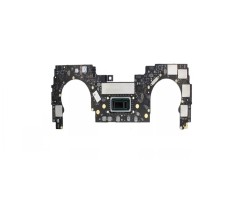Secrets Behind a Perfect Restaurant Menu: What Customers Really Look For
Unlock the secrets to a perfect restaurant menu! Learn how to use psychology, design, and pricing strategies to attract more customers and boost sales. Discover what diners really want

A restaurant menu is far more than a simple list of dishes; it's a carefully crafted marketing tool that shapes customer perceptions, influences decisions, and ultimately drives sales. Understanding consumer behavior and knowing what makes a menu truly irresistible is essential for success in the competitive food and beverage industry. Let’s delve into the secrets behind crafting the perfect menu.
Understanding Consumer Preferences
Consumer preferences play a pivotal role in shaping menu offerings and dining experiences. These preferences are subjective tastes, likes, and dislikes that individuals have when making purchasing decisions. A successful menu caters to these preferences while subtly guiding customers toward profitable choices.Several factors influence consumer preferences:
- Cultural Influences: Different cultures have varying attitudes toward food, leading to diverse preferences regarding taste, ingredients, portion sizes, and dining rituals.
- Health and Wellness: There’s a growing demand for nutritious, organic, and allergen-free options. Diners are making healthier choices, and menus are reflecting this trend with functional ingredients like added fruits, vegetables, omega-3s, and probiotics. For those looking for lighter fare, this can be a major draw, as more than half of diners report making healthier choices when eating out compared to just two years ago.
- Sensory Appeal: Consumers often gravitate toward visually appealing and aromatic dishes, and the overall sensory experience plays a substantial role in shaping their preferences.
- Ethical and Environmental Concerns: Many consumers prioritize ethical sourcing, sustainability, and eco-friendly practices when making food and beverage choices.
Understanding these intricate factors is crucial for businesses to thrive. It involves deciphering the underlying reasons behind customers' choices.
Menu Psychology: Influencing Customer Choices
Menu design leverages various psychological principles to influence human behavior. Some key elements include:
- Strategic Placement: The way dishes are grouped and sequenced on the menu can influence customer choices. Grouping high-margin items with less popular ones can improve the latter's visibility and sales. Placing high-profit or signature dishes strategically can draw attention and drive sales.
- Descriptive Language: Appetizing descriptions can influence perceptions of price and value. Restaurateurs would benefit significantly by carefully crafting menu descriptions that emphasize food. Using descriptive language makes the dishes sound more enticing and justifies the menu prices.
- Color Theory: Color can have a significant impact on customer behavior. Certain colors stimulate appetite, while others convey freshness or healthiness.
- Menu Size and Complexity: A too-extensive menu can be overwhelming, while a too-limited menu might not offer enough variety. Balancing the menu with a mix of familiar and exotic dishes can cater to different customer personalities.
By understanding visual and cognitive psychology principles, restaurants can create menus that appeal to customers' emotions, senses, and desires.
Design Elements for an Irresistible Menu
The design of your menu should align with your restaurant’s brand and theme. Whether it’s elegant, casual, ethnic, or modern, the design and language of the menu should align with your brand identity.Consider these design tips:
- Layout Optimization: Organize the menu into clear sections with bold headings. A clean layout with ample white space ensures readability and reduces decision fatigue.
- Font Style and Size: Choose fonts that are easy to read while reflecting your restaurant’s theme. Ensure that font sizes are large enough for all customers to read comfortably.
- Images: While high-end restaurants often avoid photos to maintain sophistication, casual eateries can benefit from including one high-quality image per page.
Menu Prices and Perceived Value
Menu design can influence perceptions of price and value. Using specific font styles, colors, and appetizing descriptions can influence customers’ perceptions of the menu prices and value of menu items, potentially encouraging them to spend more. Many diners often consult websites like todaymenuprices.com to get an idea of what they can expect to pay at certain restaurants.Here are some pricing strategies to consider:
- Psychological Pricing: Avoid using dollar signs or listing prices in columns, as this draws attention to cost rather than value.
- Value-Based Pricing: Consider the perceived value of your dishes based on quality, uniqueness, and dining experience.
- Competitive Analysis: Research competitors' pricing to ensure your menu aligns with market expectations.
Adapting to Trends and Preferences
Smart restaurant owners conduct a menu analysis that reacts to diner preferences based on when they are most likely to eat and what types of foods they prefer. Consumer preferences can change by meal, day of the week, and even by certain months.Here are some ways to stay on top of trends:
- Monitor Food Trends: Keep an eye on evolving culinary trends and dietary needs.
- Utilize Social Listening Tools: Leverage social listening tools to monitor online conversations, reviews, and sentiments surrounding food and beverage preferences.
- Menu Innovation: Use customer insights to drive menu innovation, introducing dishes and beverages that align with prevalent consumer preferences and emerging market demands.
Conclusion
The secrets behind a perfect restaurant menu lie in understanding consumer behavior, leveraging menu psychology, and adapting to evolving trends. By creating a menu that appeals to customers' desires and preferences, restaurants can enhance the dining experience, increase profits, and build lasting customer loyalty.
What's Your Reaction?






















